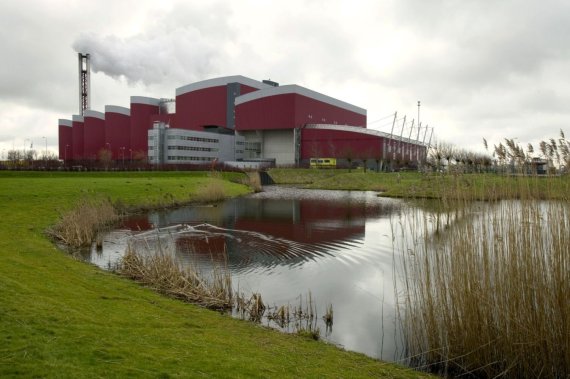Isn’t the white smoke coming out of waste incineration plants bad for crops in the vicinity? No, says Chris van Dijk (PRI) with confidence after 10 years of study. Plants growing in the vicinity are of the same quality as those far from any such installations. Modern incineration plants such as those near Alkmaar, Wijster and Harlingen have to conform to strict emissions norms. In principle, they are not allowed to release any harmful substances such as cadmium, mercury and PAKs, or organic substances such as the carcinogenic dioxin. But how do you convince local residents of this? ‘After all, people see a plume of smoke going into the air 24 hours a day, 7 days a week. What does that mean for our vegetables and crops, they wonder,’ says Van Dijk. Together with consultancy form Royal Haskoning, PRI came up with a way of reassuring people: biomonitoring. Grow a couple of sensitive test plants and keep your finger on the pulse. ‘Biomonitoring is a convincing way of proving whether certain substances are present,’ explains Van Dijk. ‘You can measure anything you like in the smoke, but it is better still to measure what’s in the plants themselves. If the norms for the indicator crops are not exceeded, you can assume that the arable crops are safe too.’
Too much fluoride
Van Dijk and his colleagues chose spinach and kale as suitable indicators. It is known that both plants absorb cadmium, mercury and PAKs in their leaves. Spinach grows in the spring and summer, kale in the autumn and winter. The plants were growing in containers filled with clean soil and placed where the most smoke reaches the ground. The results are as dull as they are clear and reassuring. The levels of heavy metals and PAKs found are no higher than background levels. Waste incineration has no influence on the quality of the vegetables and crops in the area. What is more, milk tested that came from cows that had grazed mainly under the smoke from the waste plant was free of dioxins. Only the grass at two of the three plants sometimes contained too much fluoride in the winter. Van Dijk: ‘But in terms of risks to the livestock that doesn’t play any role at all.’

